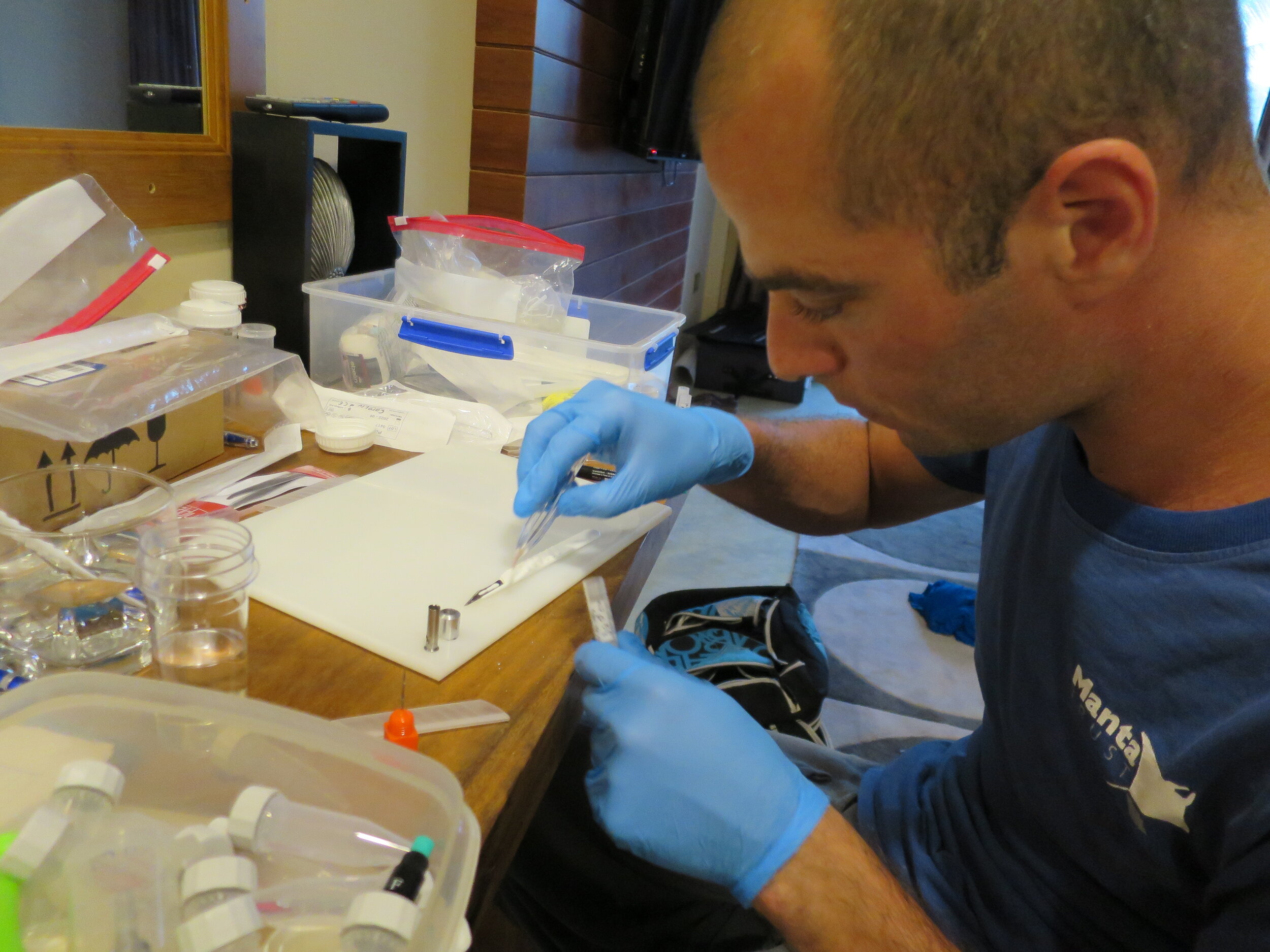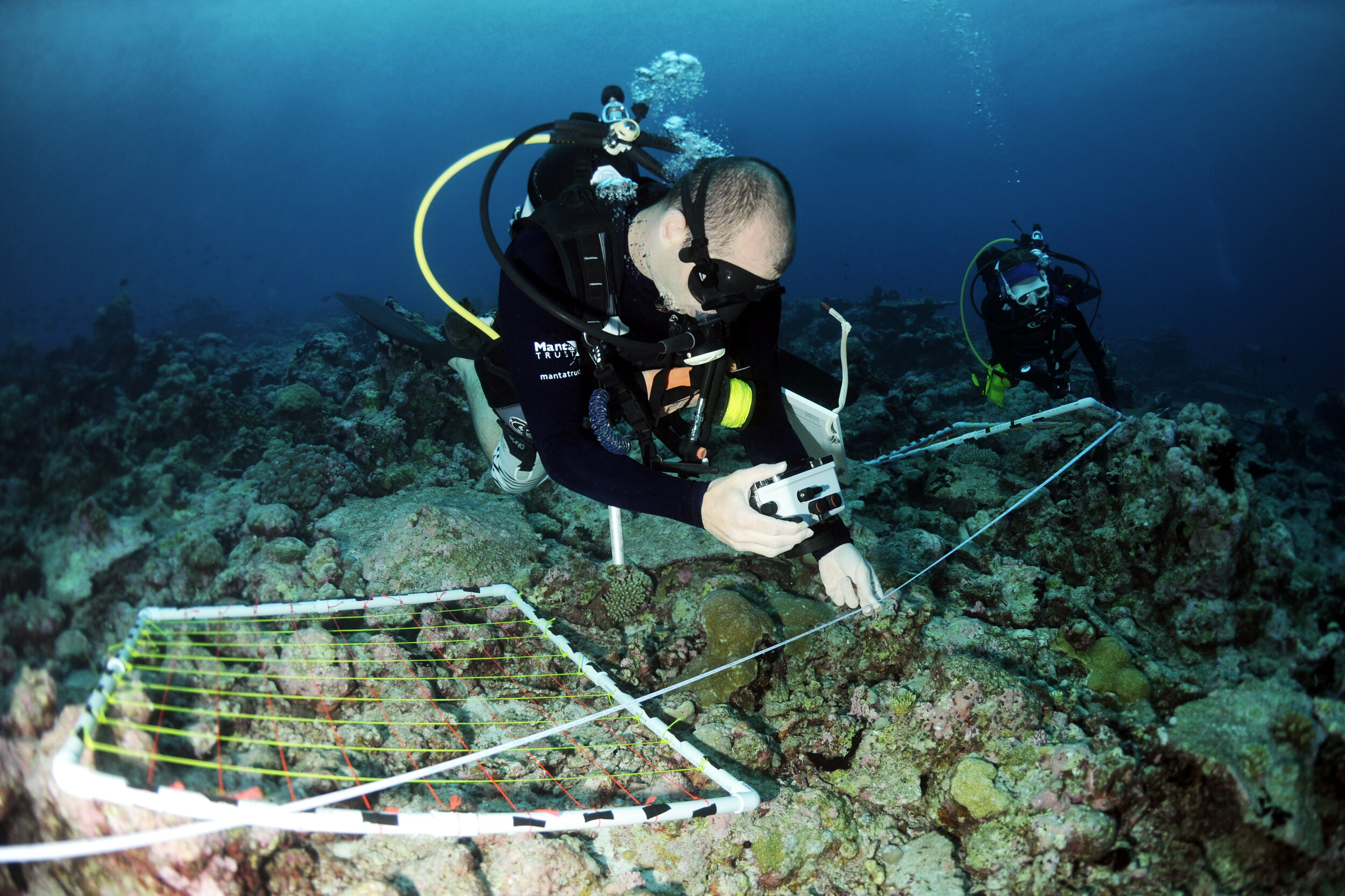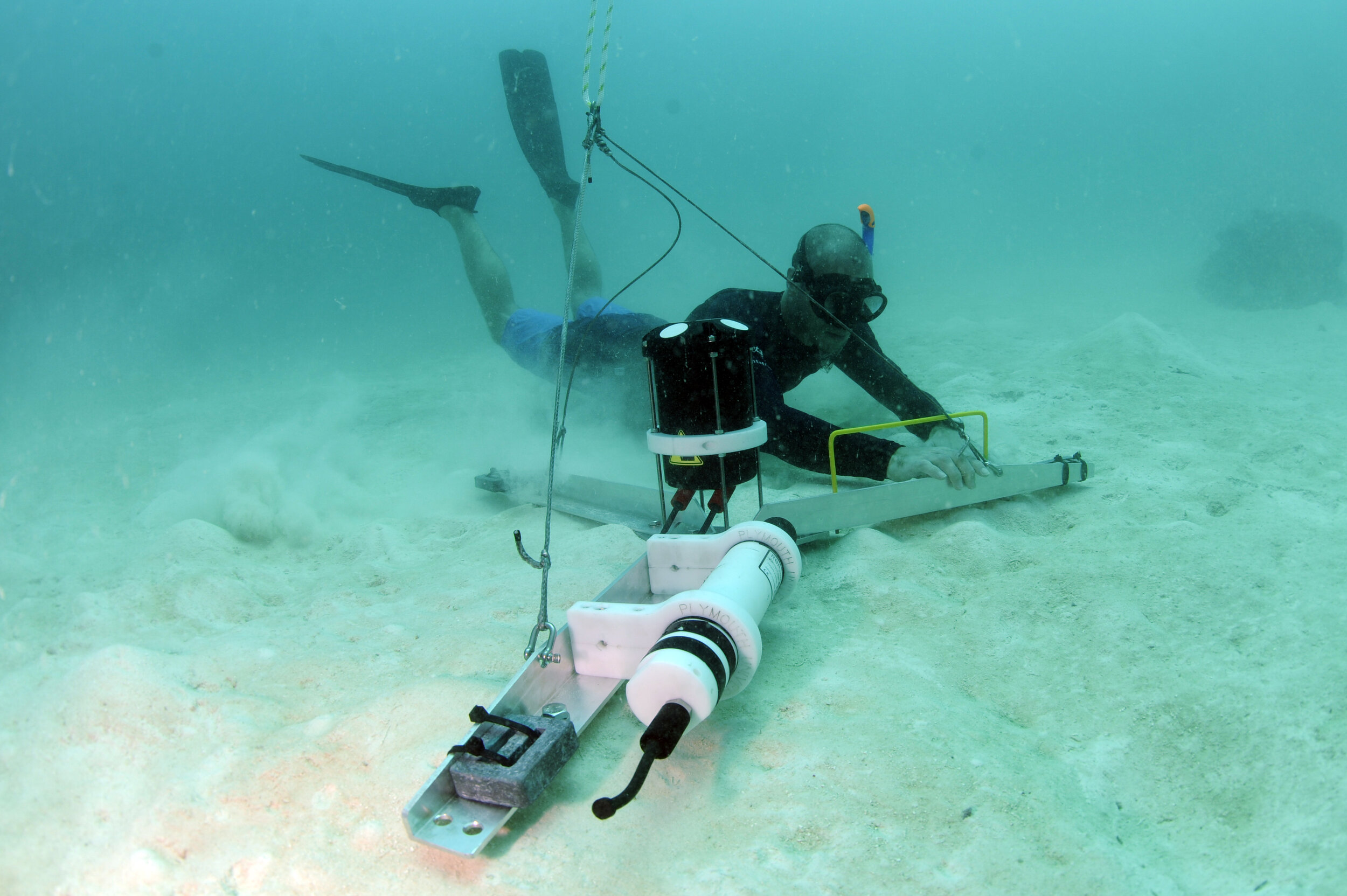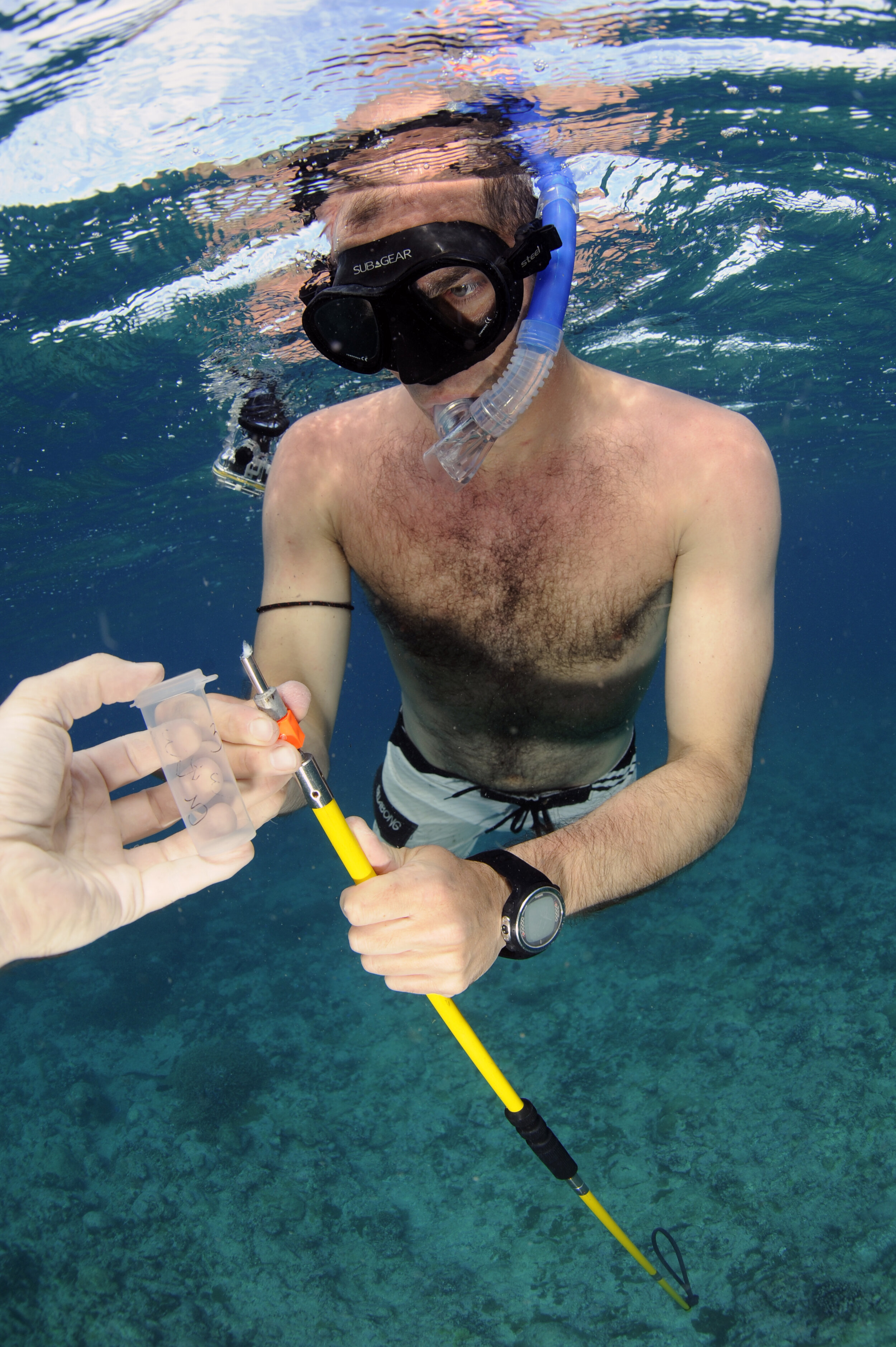Meet the Team - Niv Froman
March 2021
Tell us about your first manta ray encounter.
I barely knew about manta rays when I first had the chance to actually swim with one. This happened back in 2010, the year I started working as a marine biologist on a resort island in the Maldives. I was lucky enough to be based at a resort located near a site called Dhigurah lagoon, where mantas could be encountered year round. I clearly remember being absolutely captivated by how curious and inquisitive these creatures were and thinking how special it was to be able to have such close-up encounters with these wild animals. I remember thinking that you would consider yourself lucky to be able to catch the glimpse of a lion, an elephant or a giraffe in the wild African savannah and here I was, swimming for hours, only a few meters away from one of the largest fishes of our planet! From this moment on I was hooked!
How did you come to be involved with the Maldivian Manta Ray Project and the Manta Trust?
I think it has actually been a series of fortunate events. While working as resident biologist on a resort island in the Maldives I decided that I wanted to contribute to manta research and conservation, and after a quick search, I soon found out about the Maldivian Manta Ray Project (MMRP) founded by Guy Stevens. I initially started contributing data on the manta population that was present in the region I was based at, to the MMRP and, about a year later, I was offered the opportunity to work for the Manta Trust managing the MMRP in Baa Atoll which I took without second thoughts! I spent the next three and a half years as MMRP project leader conducting different activities all aimed at improving our knowledge of manta ray’s biology and furthering their conservation status. Always fascinated about the field of reproductive ecology and behaviour, I was particularly intrigued about manta rays’ complex reproduction which I learnt was still understudied. In 2018 a dream came true when I was accepted as a PhD student studying exactly that, at one of the most prestigious Universities in the world!
What legacy would you like to leave in your field of research/conservation?
I surely hope that the work I do will help unravelling some of the mysteries that still surround the life of manta rays. Ultimately though, I hope that my work will play a role in guiding conservationists, Governments and decision makers on ways to improve the conservation measures aimed at protecting these charismatic creatures. A lot of what I do is novel science and involves novel approached to the study of endangered marine wildlife and as such, I would be delighted to see my approach being replicated elsewhere to the study and conservation of other marine megafauna.
What is the most challenging part of your work?
I would probably say that the most challenging part of what I do is dealing with aspects that no one has ever dealt with before which, at the same time, is also what I love about my research and what makes it extremely interesting, fascinating and rewarding. Knowing that you’re delving into the unknown, that you are about to unravel facts about the life of manta rays that are still mysterious is an absolutely amazing feeling. At the same time, it generally requires testing new methodologies and new approaches with the chances of things not working exactly as planned and needing to often rethink about the approach I take to answer the research questions I originally set to answer. Conducting scientific research on a vulnerable species such as manta rays also comes with additional difficulties and restrains such as having to deal with local authorities, ensuring that the necessary permits are in place, and that regulations are followed. Another great challenge is related to the study of a manta population in their natural environment which is much more complex than studying an organism in a controlled environment where factors such as food availability, water temperature, etc. can be easily manipulated. Studying mantas in their natural environment also means travelling to far away (though stunning) locations, requiring great scuba and free diving skills and ultimately having to deal with the uncertainty of whether the animals will show up at the sites you expected them to. Yet again, all these challenges and uncertainties are exactly what make my work so exciting!
Niv performing a contactless ultrasound on a manta ray.
What is the most surprising thing you have learnt about manta/devil rays?
Not directly related to the work I am doing but I remember being fascinated by learning about mobulid rays’ complex brain. These animals have an extremely high brain to body mass ratio when compared to other fishes. Even more, the relative large size of the telencephalon, a region of the brain linked to complex social behaviours, further indicates how these animals must have a much more complex social life than we originally thought.
Mass feeding manta rays in Hanifaru Bay. Image credit: Niv Froman
If you could ask people to do one thing to help - what would it be?
I would ask to share their love for these animals, for the ocean and for the natural world in general. I believe that only through passion, love and dedication we can achieve what we set out to do. Sharing our passions, our experiences and knowledge is an extremely powerful tool which can inspire others to get actively involved in the conservation of our precious natural resources. I am certain that we can all trace back our life passions to persons we draw those passions from, be that a teacher, a family member, a celebrity, etc. We need to inspire others, and especially the youngest generations, to love and care about manta rays, our oceans and ultimately the well-being of our wonderful planet!
Niv Froman
Research Officer - Manta Reproductive Ecology










